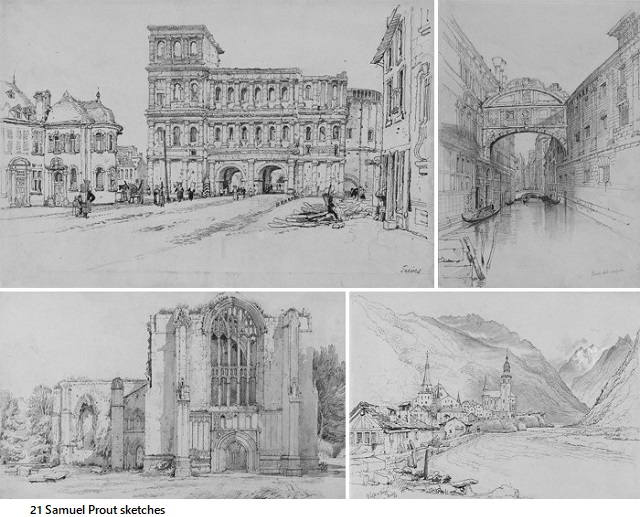Post 204 -by Gautam Shah
SUNDAY Feature on ART of Architecture
Samuel Prout (1783-1852), was a British water-colourist, known for his English landscape paintings and picturesque architecture illustrations. He was one of the masters of water-colour architectural painting. His significant contribution was of not only on-site sketches and water colour paintings, but lithographic prints from them. He was known for exploring new media. He authored several art handbooks based on his travels throughout Europe.
John Ruskin has said, ‘sometimes, I tire of JMW Turner, but never of Prout’.
Prout was the best user of lithographic art-form in England. He explored the technique of using a pen outline in his watercolours, which gave his art distinct look and evidenced his strength in the draftsmanship. In Europe Prout began to capture the picturesque features of the architecture, and his hand recorded them with deftness.
.







































































